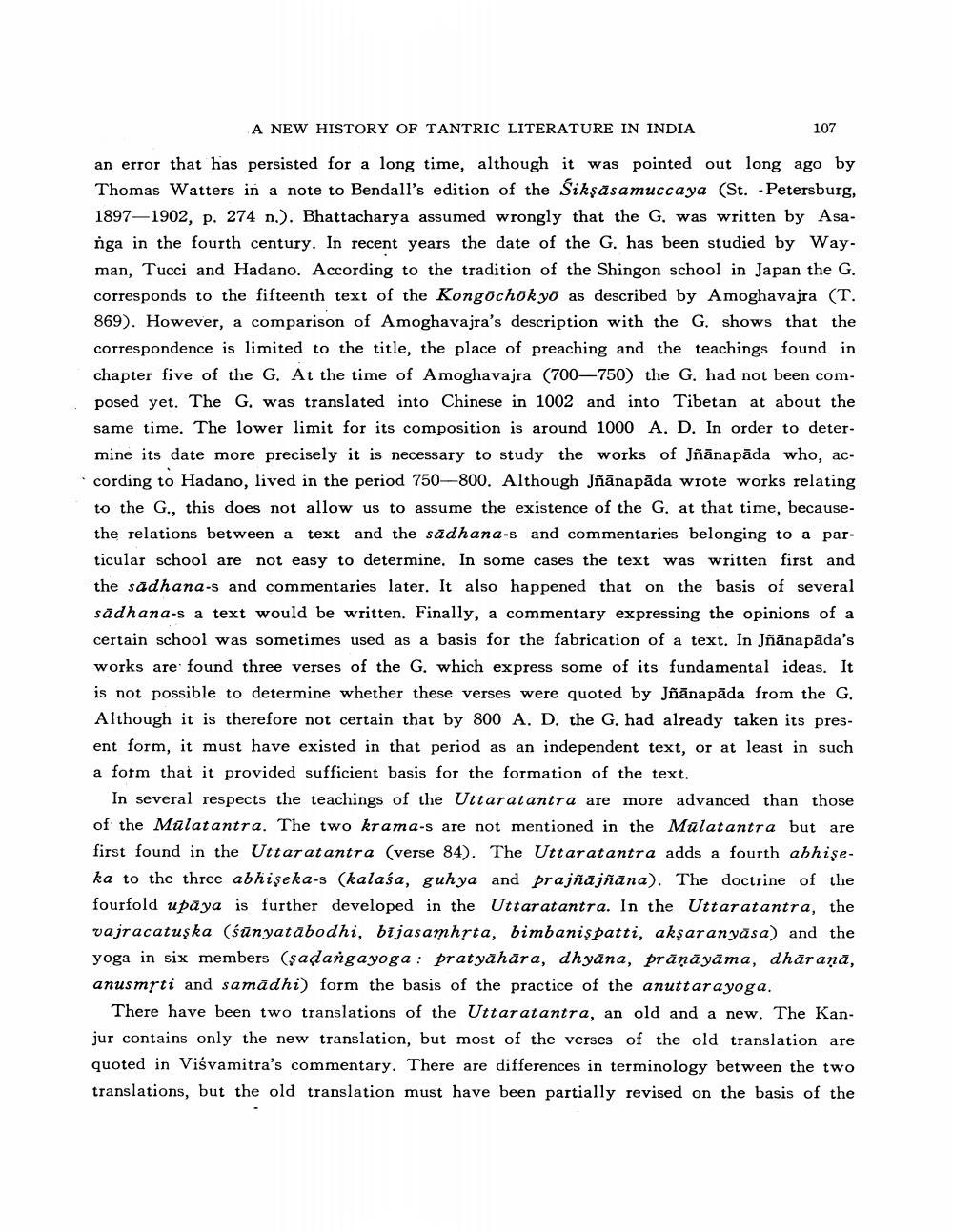________________
A NEW HISTORY OF TANTRIC LITERATURE IN INDIA
107
an error that has persisted for a long time, although it was pointed out long ago by Thomas Watters in a note to Bendall's edition of the Sikşāsamuccaya (St. - Petersburg, 1897—1902, p. 274 n.). Bhattacharya assumed wrongly that the G. was written by Asanga in the fourth century. In recent years the date of the G. has been studied by Wayman, Tucci and Hadano. According to the tradition of the Shingon school in Japan the G. corresponds to the fifteenth text of the Kongochok yo as described by Amoghavajra (T. 869). However, a comparison of Amoghavajra's description with the G, shows that the correspondence is limited to the title, the place of preaching and the teachings found in chapter five of the G. At the time of Amoghavajra (700—750) the G. had not been composed yet. The G. was translated into Chinese in 1002 and into Tibetan at about the same time. The lower limit for its composition is around 1000 A. D. In order to determine its date more precisely it is necessary to study the works of Jñānapāda who, according to Hadano, lived in the period 750-800. Although Jñānapāda wrote works relating to the G., this does not allow us to assume the existence of the G. at that time, becausethe relations between a text and the sadhana-s and commentaries belonging to a particular school are not easy to determine. In some cases the text was written first and the sadhana-s and commentaries later. It also happened that on the basis of several sādhana-s a text would be written. Finally, a commentary expressing the opinions of a certain school was sometimes used as a basis for the fabrication of a text. In Jñānapāda's works are found three verses of the G, which express some of its fundamental ideas. It is not possible to determine whether these verses were quoted by Jñānapāda from the G. Although it is therefore not certain that by 800 A. D. the G. had already taken its present form, it must have existed in that period as an independent text, or at least in such a form that it provided sufficient basis for the formation of the text.
In several respects the teachings of the Uttaratantra are more advanced than those of the Malatantra. The two krama-s are not mentioned in the Malatantra but are first found in the Uttaratantra (verse 84). The Uttaratantra adds a fourth abhiseka to the three abhiseka-s (kalaśa, guhya and prajñajñāna). The doctrine of the fourfold upaya is further developed in the Uttaratantra. In the Uttaratantra, the vajracatuṣka (śünyatabodhi, bijasamhsta, bimbanispatti, akşaranyäsa) and the yoga in six members (sadangayoga: pratyahara, dhyāna, prāmāyāma, dhāraņā, anusmrti and samadhi) form the basis of the practice of the anuttarayoga.
There have been two translations of the Uttaratantra, an old and a new. The Kanjur contains only the new translation, but most of the verses of the old translation are quoted in Viśvamitra's commentary. There are differences in terminology between the two translations, but the old translation must have been partially revised on the basis of the




